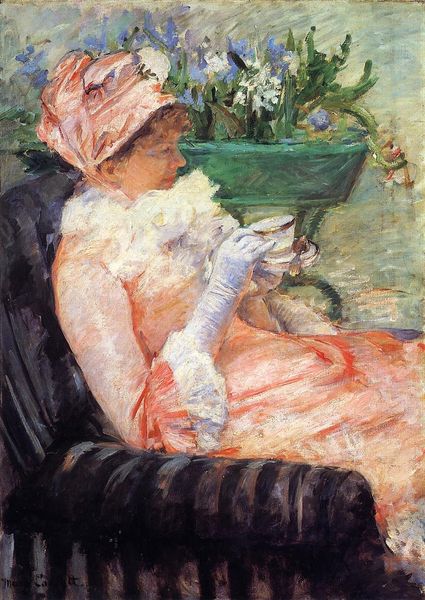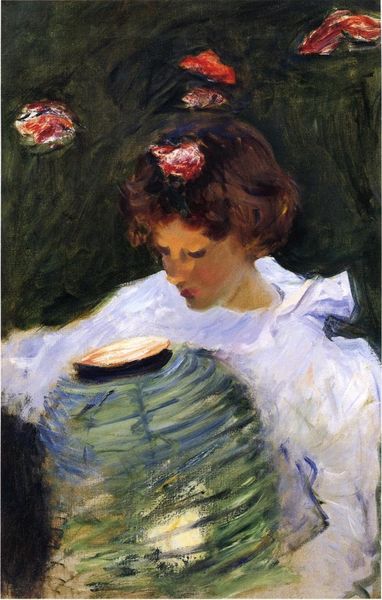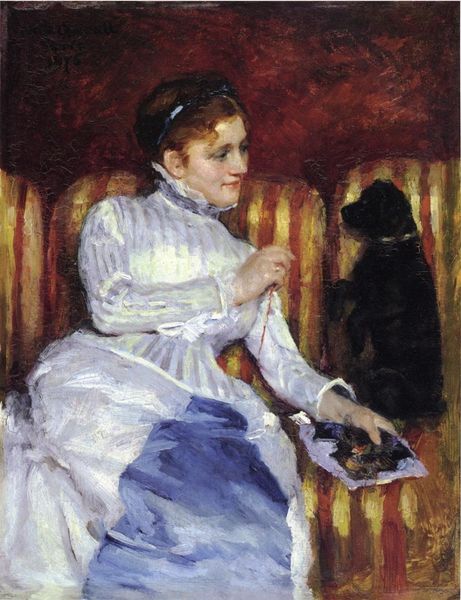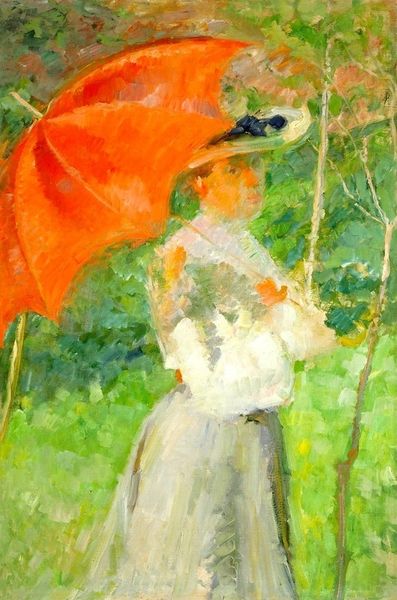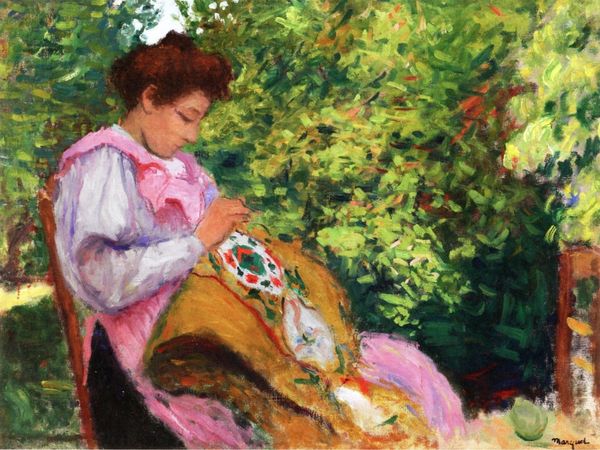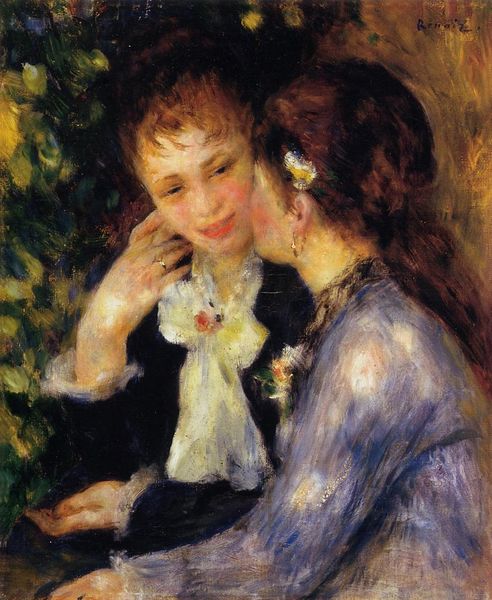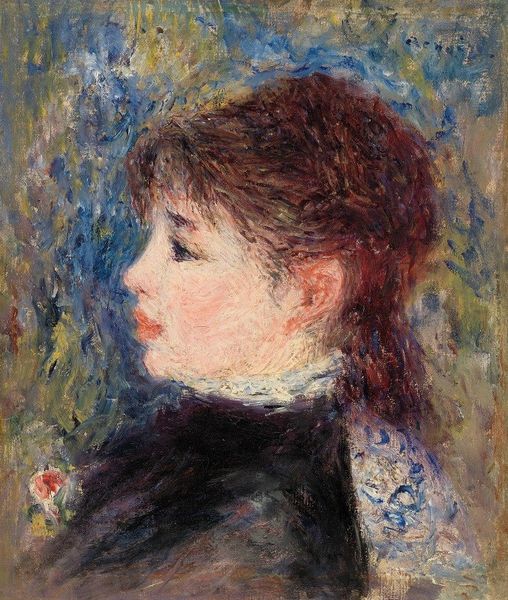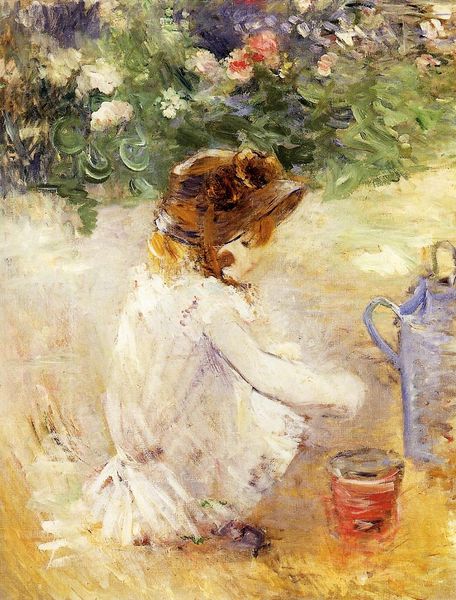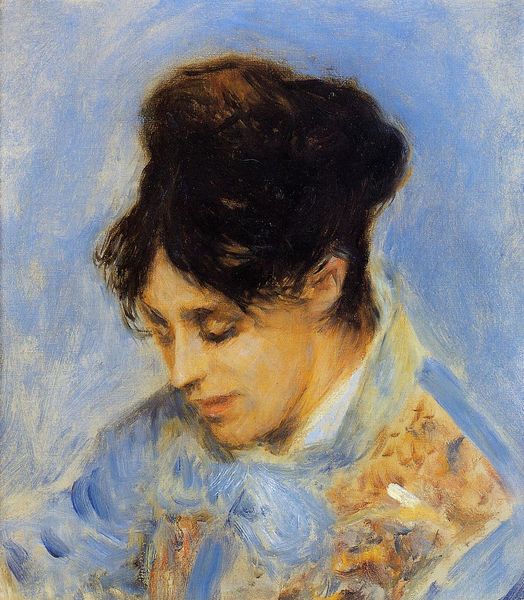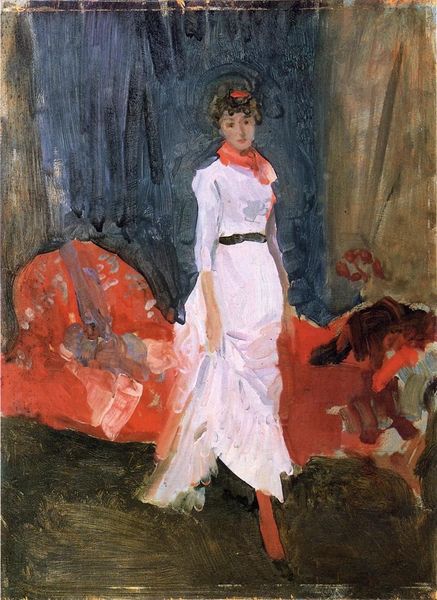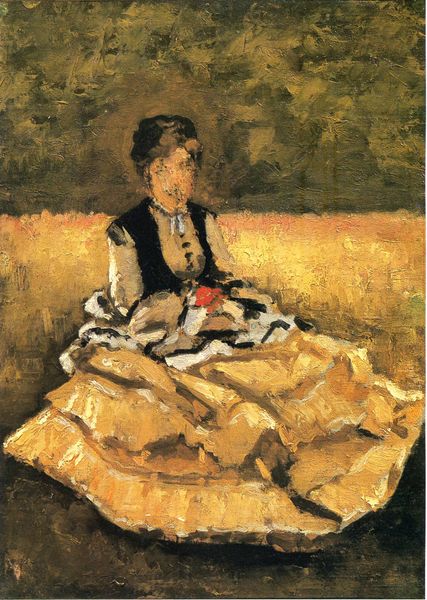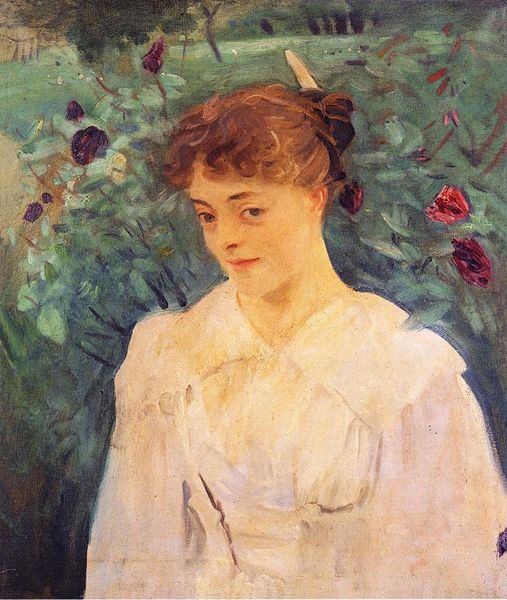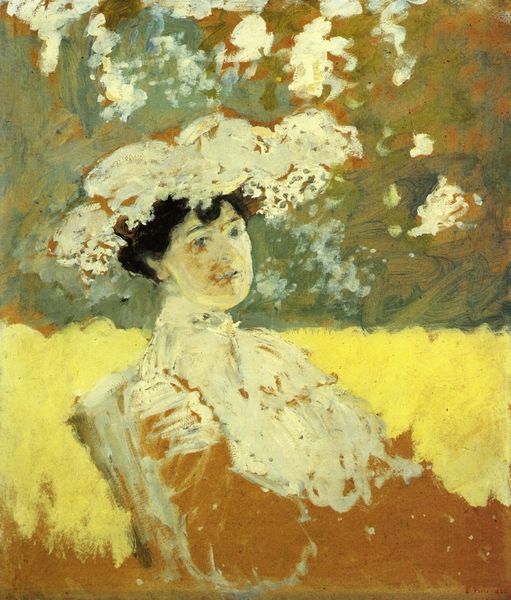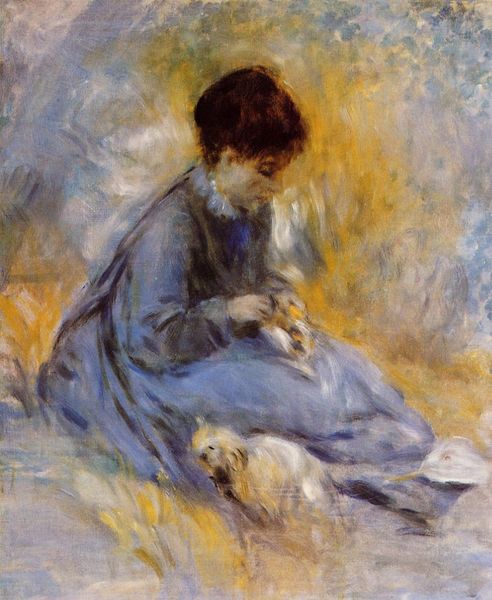
Study of Polly Barnard for "Carnation, Lily, Lily, Rose" 1885
0:00
0:00
johnsingersargent
Private Collection
painting, oil-paint
#
portrait
#
painting
#
impressionism
#
oil-paint
#
figuration
#
oil painting
#
child
Dimensions: 49.53 x 39.37 cm
Copyright: Public domain
Editor: This is "Study of Polly Barnard for 'Carnation, Lily, Lily, Rose'" painted by John Singer Sargent in 1885, using oil paints. What strikes me immediately is how intimate this feels, despite the fact we can’t see her face. It feels almost like a secret moment. What do you see in this piece? Curator: Ah, yes, it is a sneaky little peek, isn't it? Like discovering a forgotten photograph. I love that it isn't just a painting of a child, but of a feeling, an atmosphere. You almost hear the rustle of her dress and sense the coolness of the evening air. And the quick, almost feverish brushstrokes! Do you think Sargent was trying to capture something fleeting, a disappearing light perhaps? Editor: Absolutely! The way he captures the light is stunning, almost dreamlike. Did he often work with children as subjects? Curator: He did, indeed! He loved the ephemeral quality of childhood, the way light dances across a child’s face, or the fleeting expressions that tell a thousand stories. Sargent was particularly fond of painting en plein air, so the transience of natural light must have certainly appealed to him! There's a lovely push and pull between capturing reality and inventing a new one, what do you think? Editor: Definitely. There’s a raw energy, like he’s captured something almost too real to be put into words, which is why he probably preferred painting it! Curator: Precisely! This "study" allows us to peek behind the curtain and understand his artistic approach, revealing not just Polly, but Sargent's artistic mind in full bloom. What a privilege. Editor: I hadn't thought of it that way before! Looking at a preparatory work in itself opens new possibilities, doesn't it?
Comments
No comments
Be the first to comment and join the conversation on the ultimate creative platform.
